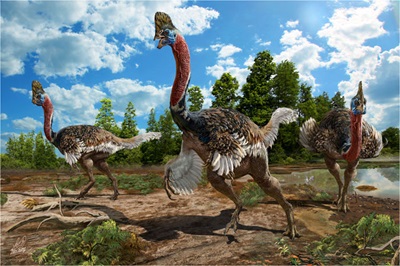Faculty Features
SMU Paleontology Professor Receives Unique Honor
Dr. Louis Jacobs, Professor, Roy M. Huffington Department of Earth Sciences and President, Institute for the Study of Earth and Man at SMU, is no stranger to new species of dinosaurs, and now a new species has been named in his honor: the Corythoraptor jacobsi (C. jacobsi). Three members of the research team that discovered the new beast are former students who were mentored by Dr. Jacobs, and they chose to give him this special accolade, indicating the importance of his guidance in their careers.
 As Dr. Jacobs approaches his retirement and prepares an upcoming exhibit for the Smithsonian (opening November 2018), this honor serves as a lovely recognition of his work in and out of the lab, as well as his impact on those he has mentored and taught throughout the years.
As Dr. Jacobs approaches his retirement and prepares an upcoming exhibit for the Smithsonian (opening November 2018), this honor serves as a lovely recognition of his work in and out of the lab, as well as his impact on those he has mentored and taught throughout the years.
“I am so very proud of my three former students, now colleagues, who have taken their places on the global stage. I am very honored by their naming Corythoraptor jacobsi after me. They have honored me, and they have also honored SMU, showing that world changers really are shaped here,” Jacobs said
Though nine other animals have been named for Dr. Jacobs, C. jacobsi is the first dinosaur.
The remains of the C. jacobsi were discovered by a Chinese farmer in Ganzhou, which is located in southern China, in 2013. Remarkably, the remains were well-preserved, and the paleontologists uncovered an almost complete skeleton. The dinosaur is thought to have resembled a modern-day cassowary, an ostrich-like animal native to Australia and New Guinea. C. jacobsi is an oviraptorid, which is a giant, bird-like dinosaur, and is thought to have lived from about 100 million to 66 million years ago.
Importantly, this discovery provides more evidence of the types of species present in the Ganzhou region during this period. The C. jacobsi is the seventh oviraptorid named from Ganzhou, which would indicate that the area was flush with the species during the age of the dinosaurs.
It’s important to note that the C. jacobsi is not a direct relative of the modern-day cassowary bird, despite several similarities. Notably, C. jacobsi had a crest on its head, which was very similar to the crest on the cassowary bird, giving us potential clues about how it may have been used. Researchers think that the crest was likely used in several different ways: as display, to communicate, and potentially even as an indication of fitness during mating season. Researchers have also uncovered evidence that the C. jacobsi had a similar lifestyle to the cassowary.
The specimen is now housed at the Jinzhou Paleontological Museum in China’s Liaoning province.